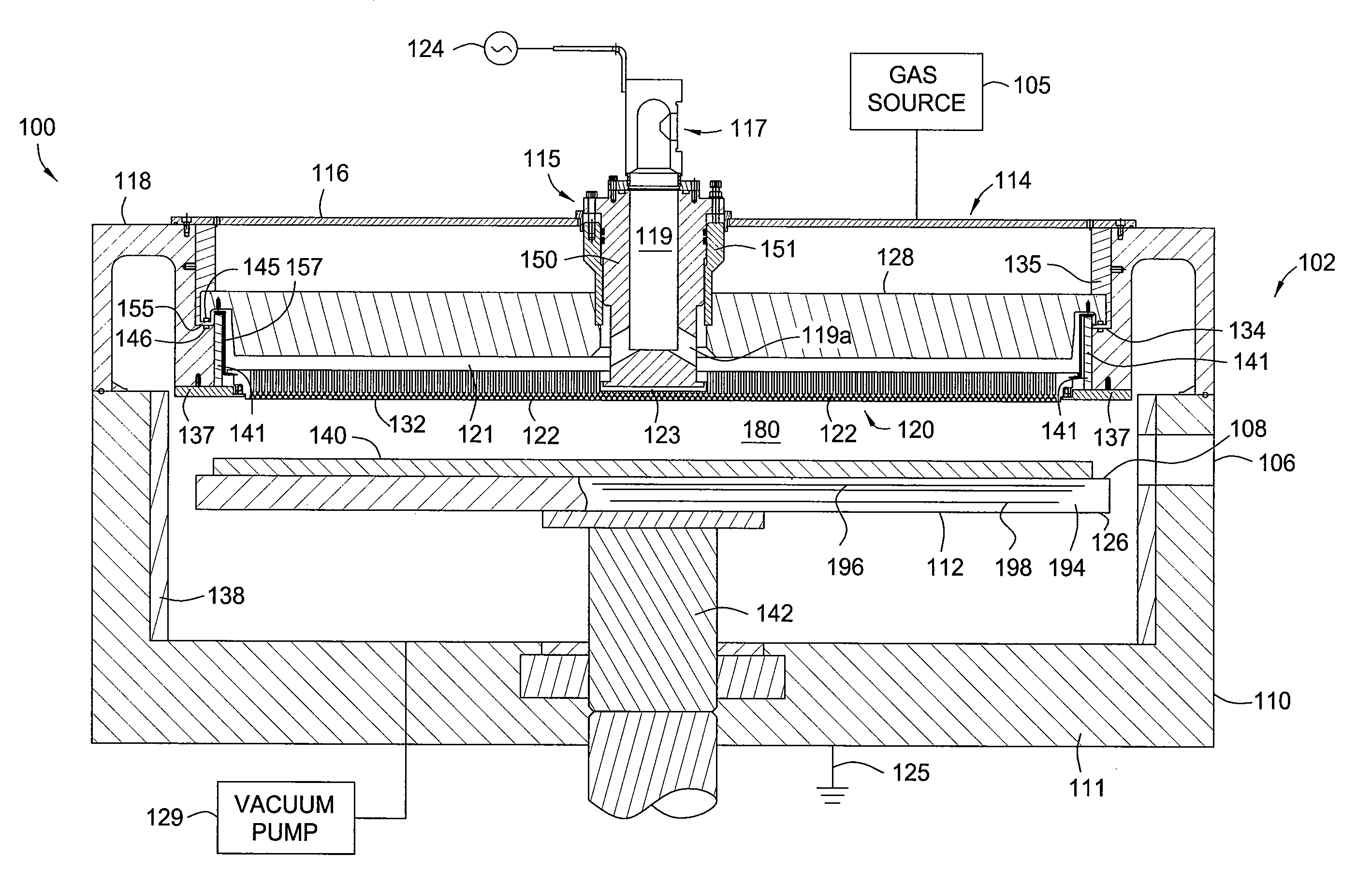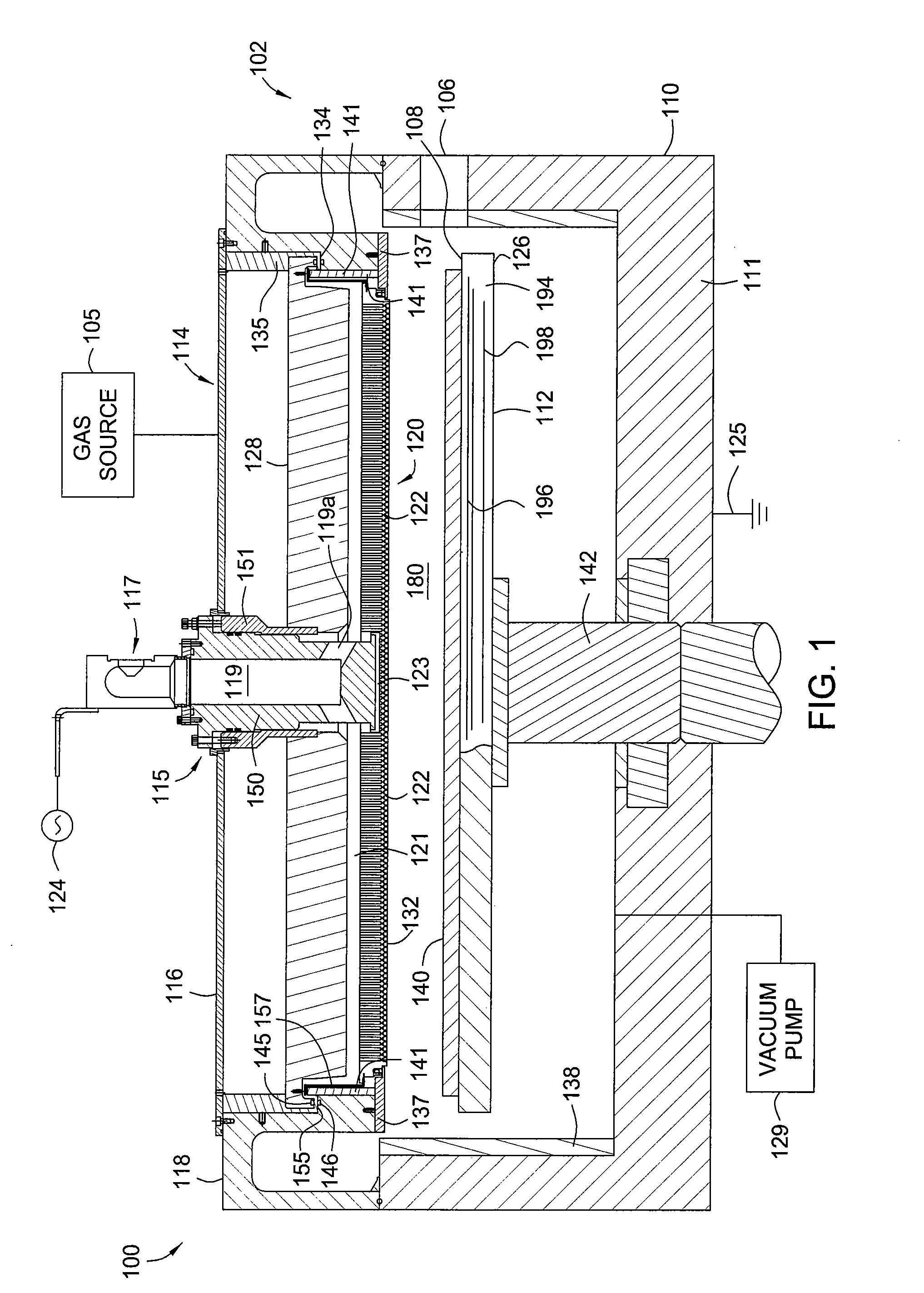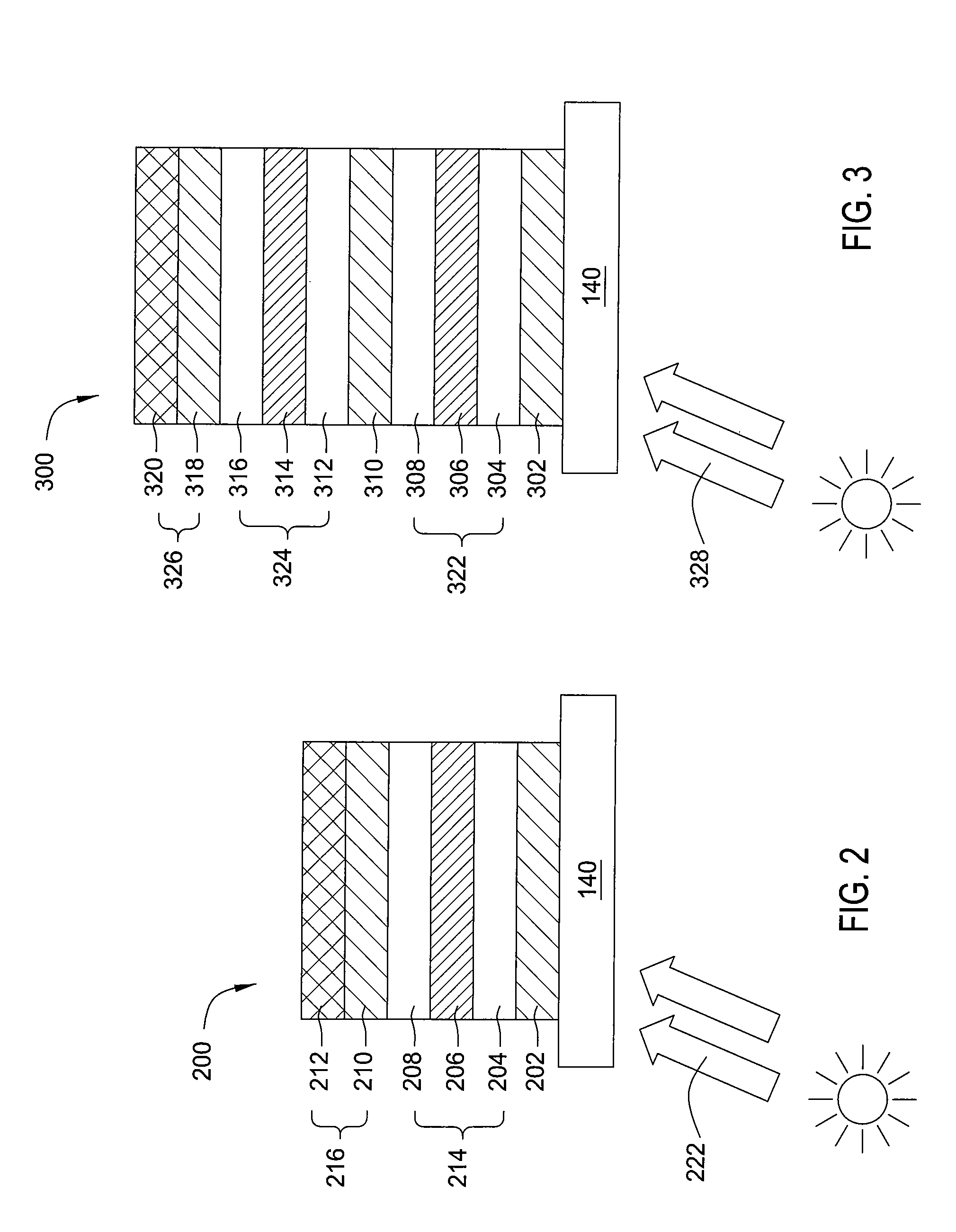Methods and apparatus for depositing a microcrystalline silicon film for photovoltaic device
a photovoltaic device and microcrystalline silicon technology, applied in the direction of crystal growth process, sustainable manufacturing/processing, final product manufacturing, etc., can solve the problems of reducing the conversion efficiency of pv solar cells, reducing manufacturing throughput, increasing production costs, etc., to improve the deposition rate, and improve the film quality
- Summary
- Abstract
- Description
- Claims
- Application Information
AI Technical Summary
Benefits of technology
Problems solved by technology
Method used
Image
Examples
Embodiment Construction
[0021]The present invention provides methods for depositing a microcrystalline silicon layer. Certain embodiments of the present invention provides a microcrystalline deposition process with improved deposition rate greater than about 20 nm per minute suitable for use in a PV solar cell. In certain embodiment, the microcrystalline silicon film layer has a crystallized volume between about 20 percent to about 80 percent. In certain embodiments, the microcrystalline silicon film has a hydrogen content between about 0.1 atomic percentage and about 20 atomic percentage. In certain embodiment, the microcrystalline silicon film has a crystal orientation plane (220) parallel to the surface of the film and an intensity ratio of the (111) diffraction peak relative to the (220) diffraction peak in X-ray diffraction between about 2 and about 0.1. In certain embodiments, the process for depositing the microcrystalline silicon layer utilizes a plasma formed from a gas mixture that includes a sil...
PUM
| Property | Measurement | Unit |
|---|---|---|
| Temperature | aaaaa | aaaaa |
| Temperature | aaaaa | aaaaa |
| Length | aaaaa | aaaaa |
Abstract
Description
Claims
Application Information
 Login to View More
Login to View More - R&D
- Intellectual Property
- Life Sciences
- Materials
- Tech Scout
- Unparalleled Data Quality
- Higher Quality Content
- 60% Fewer Hallucinations
Browse by: Latest US Patents, China's latest patents, Technical Efficacy Thesaurus, Application Domain, Technology Topic, Popular Technical Reports.
© 2025 PatSnap. All rights reserved.Legal|Privacy policy|Modern Slavery Act Transparency Statement|Sitemap|About US| Contact US: help@patsnap.com



